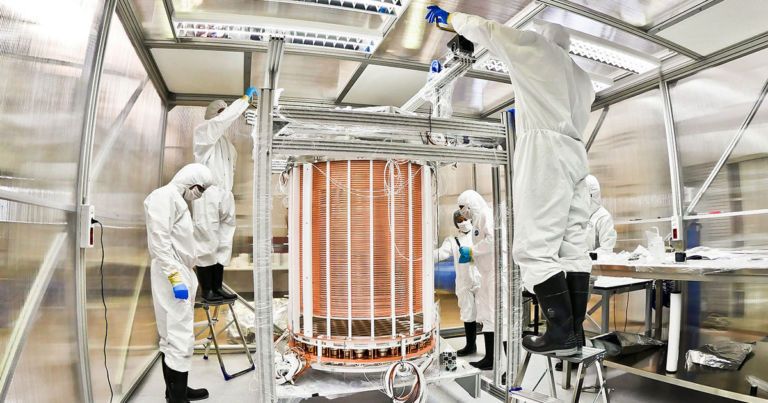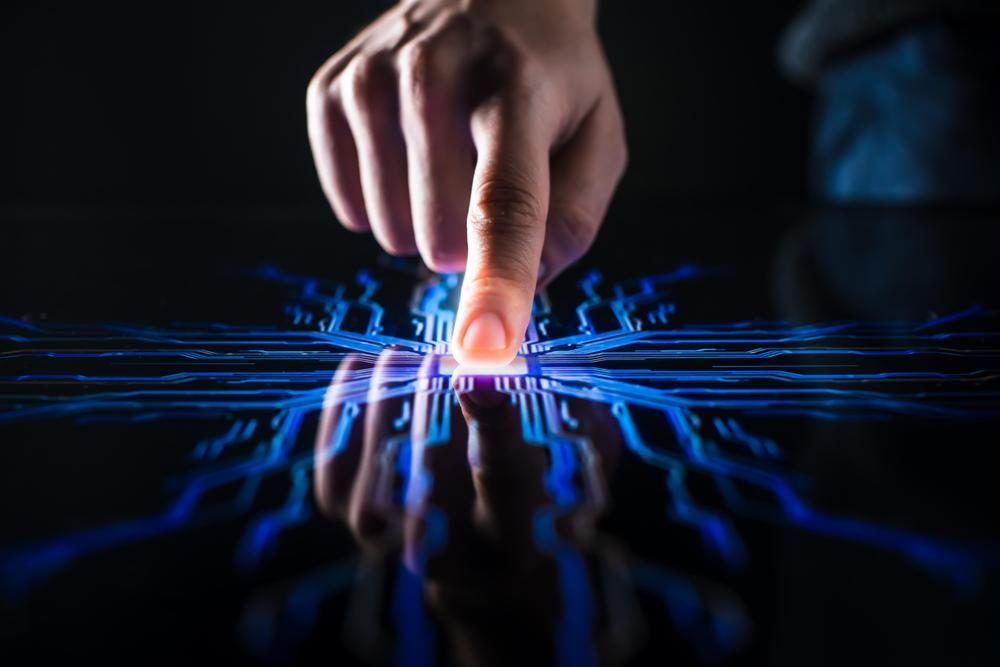A simplified explanation of the higgs mechanism.



The CERN Control Centre (CCC) is abuzz once again. The second long shutdown (LS2) has come to an end for CERN’s newest accelerator – Linac 4 – and the accelerator complex’s slow awakening from a two-year repair-and-recuperation hibernation has begun. The three-week machine-development run until mid-August saw low-energy beams of negative hydrogen ions (H−) fly through the first part of the accelerator for the first time since it was connected to the PS Booster. On August 20, the first beams at the nominal energy of 160 MeV were accelerated through the entire machine and into a dedicated beam dump located at the end of the linac. Over the coming months, the brand-new accelerator will finish being commissioned and will be made ready to deliver various beams to the PS Booster in December.
CERN is famous for its circular accelerators, in particular the 27-kilometer-circumference Large Hadron Collider. But the protons that circulate in these bigger machines first undergo acceleration in a humble and relatively small linear accelerator, or linac. In 2018, Linac 2, which had fed protons to CERN’s accelerator complex since 1978, was finally retired, with the 86-meter-long Linac 4 ready to take its place. But a new machine comes with new challenges for the team operating it.
The machine-development phase from late July was handled by the Accelerators and Beam Physics group (ABP) team responsible for the proton sources, who previously also ran the Linac 2 operations. “ABP made sure that we could send beam through the first structure in Linac 4, the so-called radio-frequency quadrupole or RFQ, with low beam losses,” notes Bettina Mikulec, who is leading the team from the Operations group (OP) who are responsible not only for Linac 4 but for the PS Booster as well. Over the three weeks, ABP also worked on optimizing the proton source and realigning it to get a better angle for the particles entering the RFQ. ABP then handed over the accelerator for commissioning to the team from OP.

The particle, which has been called X(2900), was detected by analyzing all the data LHCb has recorded so far from collisions at CERNs Large Hadron Collider.
The LHCb experiment at CERN has developed a penchant for finding exotic combinations of quarks, the elementary particles that come together to give us composite particles such as the more familiar proton and neutron. In particular, LHCb has observed several tetraquarks, which, as the name suggests, are made of four quarks (or rather two quarks and two antiquarks). Observing these unusual particles helps scientists advance our knowledge of the strong force, one of the four known fundamental forces in the universe. At a CERN seminar held virtually on August 12, LHCb announced the first signs of an entirely new kind of tetraquark with a mass of 2.9 GeV/c²: the first such particle with only one charm quark.
First predicted to exist in 1964, scientists have observed six kinds of quarks (and their antiquark counterparts) in the laboratory: up, down, charm, strange, top and bottom. Since quarks cannot exist freely, they group to form composite particles: three quarks or three antiquarks form “baryons” like the proton, while a quark and an antiquark form “mesons.”

University of Central Florida researchers are making the cutting-edge field of attosecond science more accessible to researchers from all disciplines.
Their method to help open up the field is detailed in a new study published today in the journal Science Advances.
An attosecond is one billionth of a billionth of a second, and the ability to make measurements with attosecond precision allows researchers to study the fast motion of electrons inside atoms and molecules at their natural time scale.

While axions are not currently a proposed direct explanation for dark matter, they could’ve set the stage for the creation of dark matter in the early stages of our universe.
Scientists are undeniably excited by this third possibility, though they’re also urging restraint due to the other potential explanations.
“I’m trying to be calm here, but it’s hard not to be hyperbolic,” Neal Weiner, a particle theorist at New York University, who was not involved in the research, told The New York Times. “If this is real, calling it a game changer would be an understatement.”

Another potential explanation is that the heartbeat is illuminated by more diffuse and unstructured outflows of gas and particles generated by the disk’s precession. These outflows are not as concentrated and luminous as the jets, but they could potentially ripple out to Fermi J1913+0515 and light it up in this unique way.
The team is in the midst of collecting follow-up observations with the IRAM 30m millimeter radio telescope in Spain that might constrain the origins of the strange gamma ray heartbeat.
“We discovered the source, and discovered its periodicity, but we do not know what it means or how it is produced, so we need more observations to continue the study,” Li said.


NASA is actively monitoring a strange anomaly in Earth’s magnetic field: a giant region of lower magnetic intensity in the skies above the planet, stretching out between South America and southwest Africa.
This vast, developing phenomenon, called the South Atlantic Anomaly, has intrigued and concerned scientists for years, and perhaps none more so than NASA researchers. The space agency’s satellites and spacecraft are particularly vulnerable to the weakened magnetic field strength within the anomaly, and the resulting exposure to charged particles from the Sun.
The South Atlantic Anomaly (SAA) – likened by NASA to a ‘dent’ in Earth’s magnetic field, or a kind of ‘pothole in space’ – generally doesn’t affect life on Earth, but the same can’t be said for orbital spacecraft (including the International Space Station), which pass directly through the anomaly as they loop around the planet at low-Earth orbit altitudes.